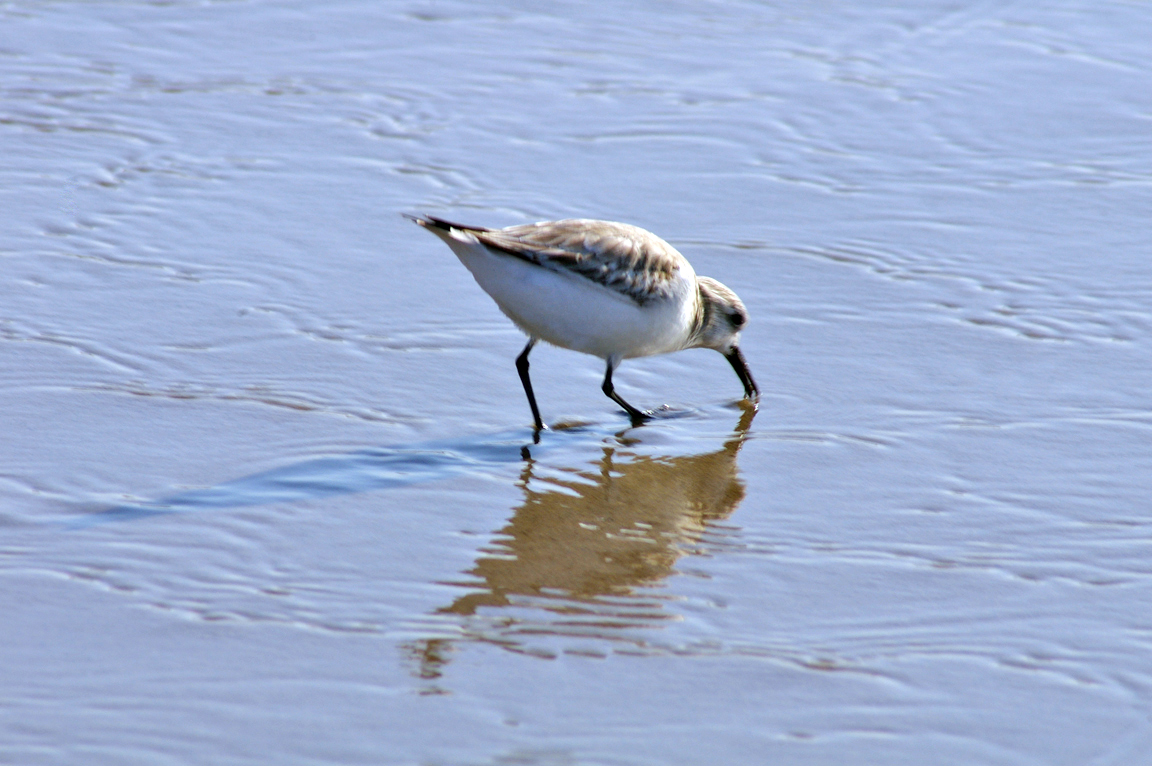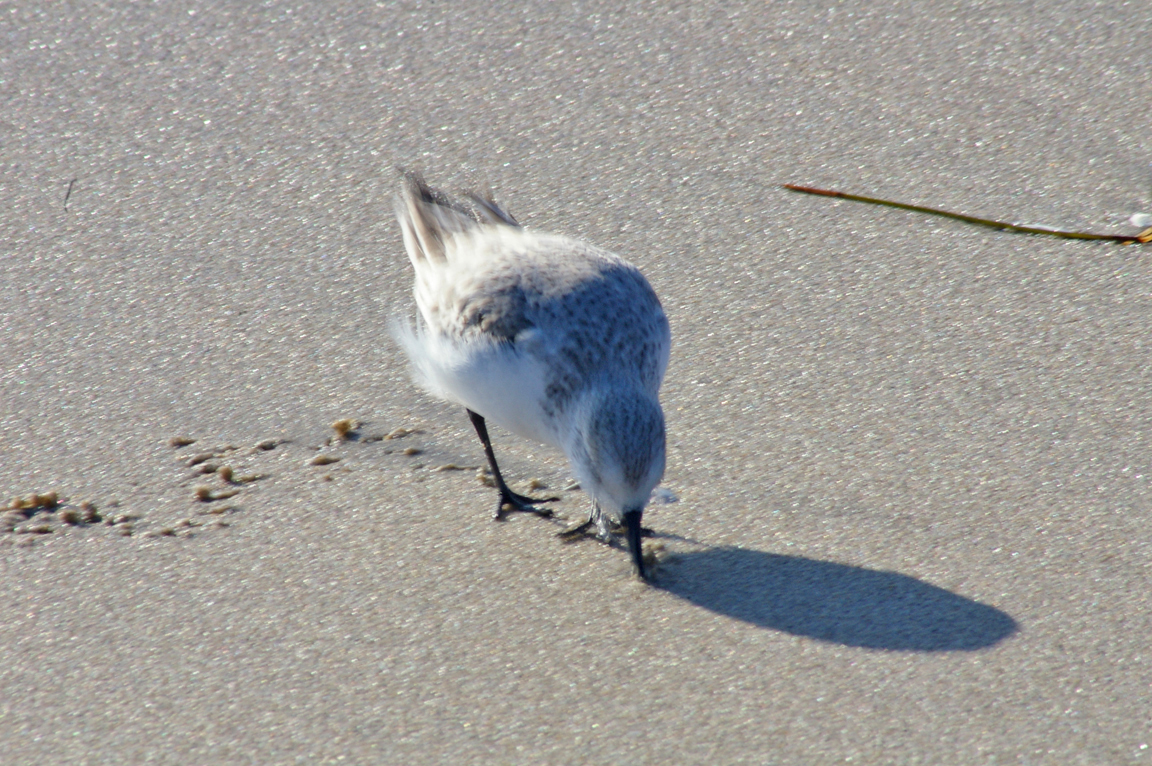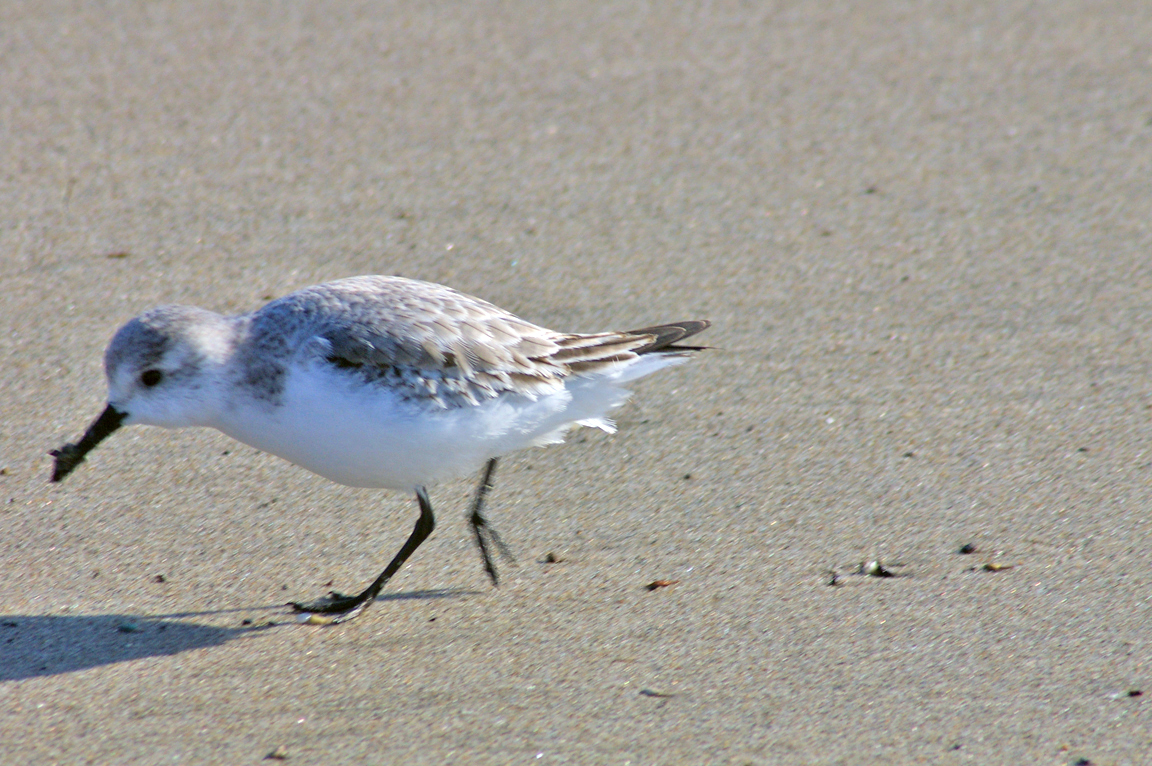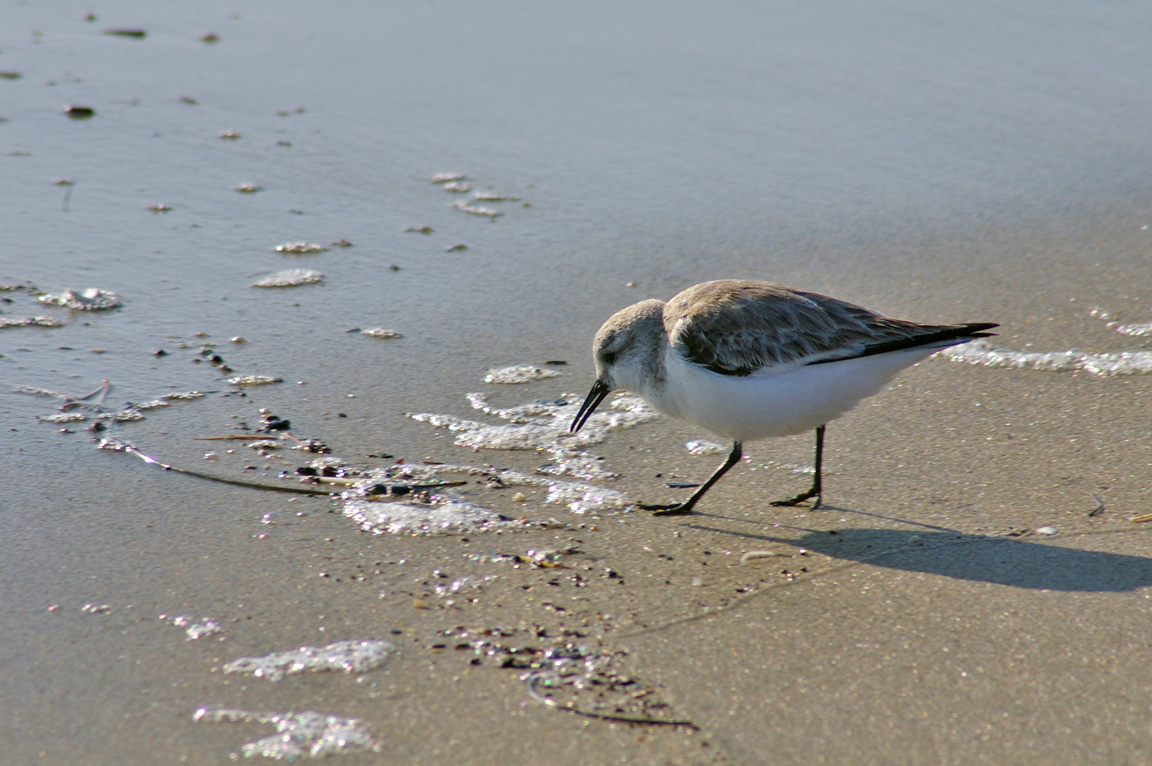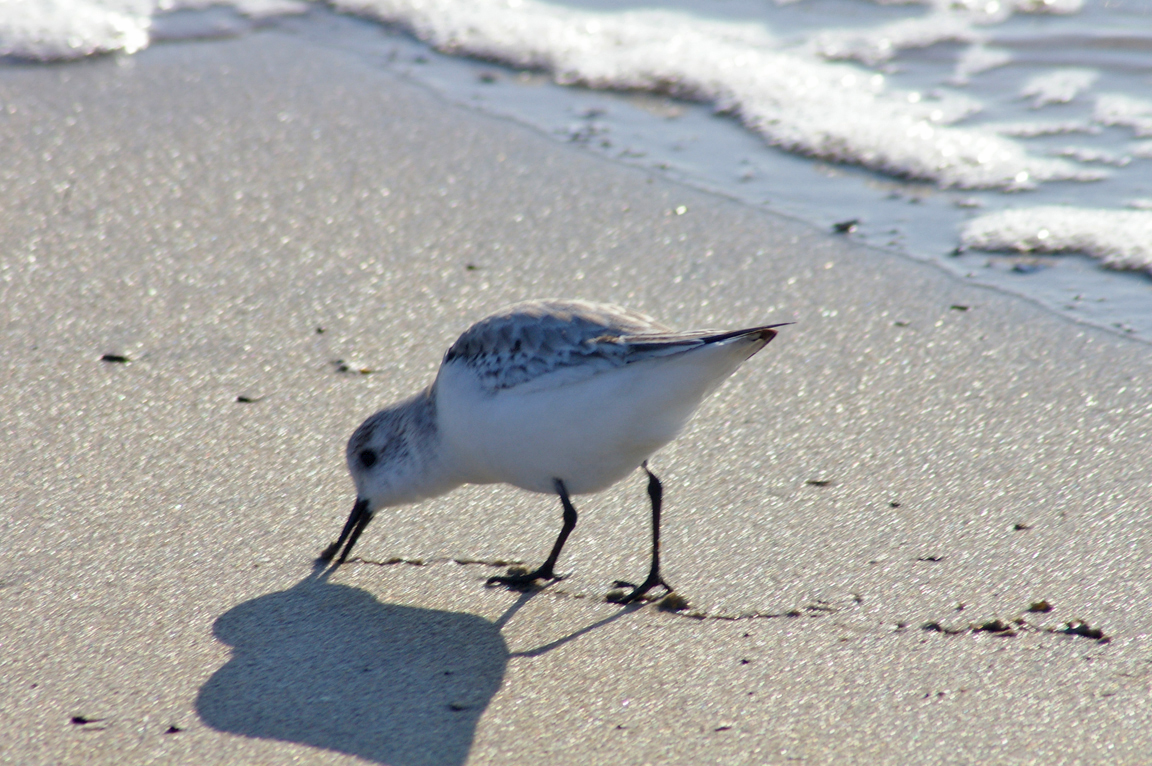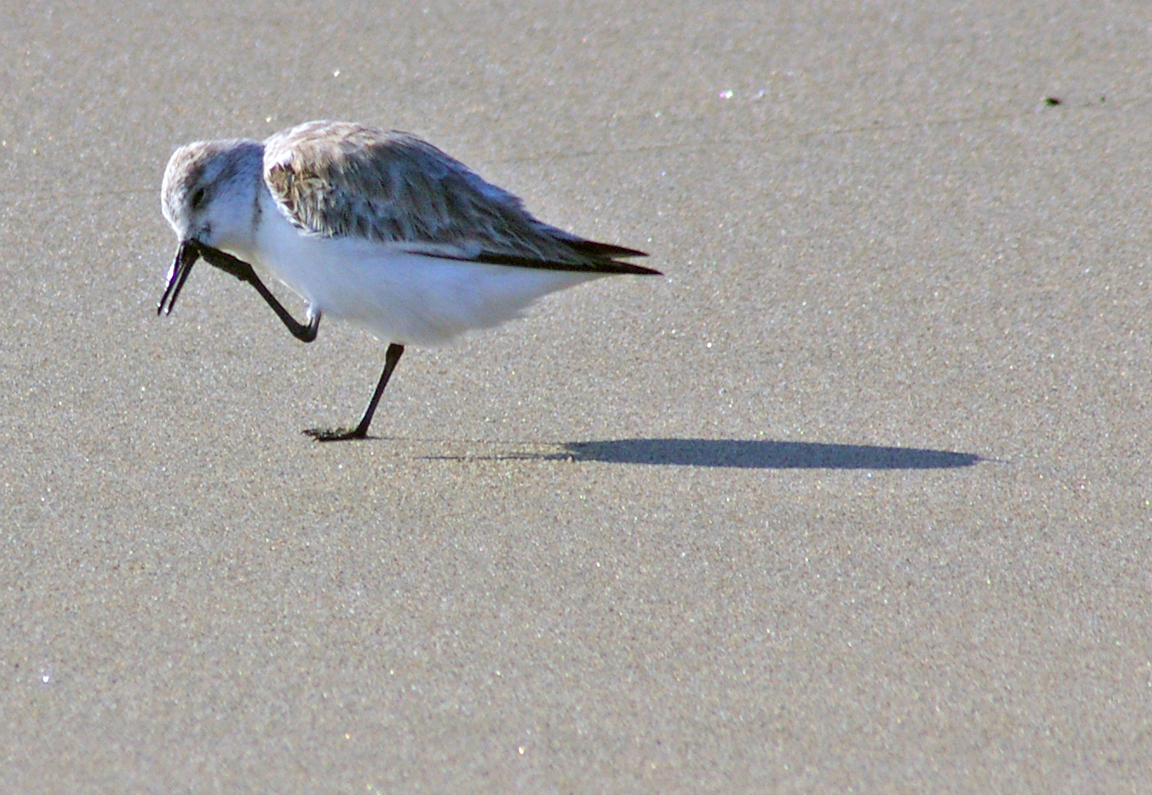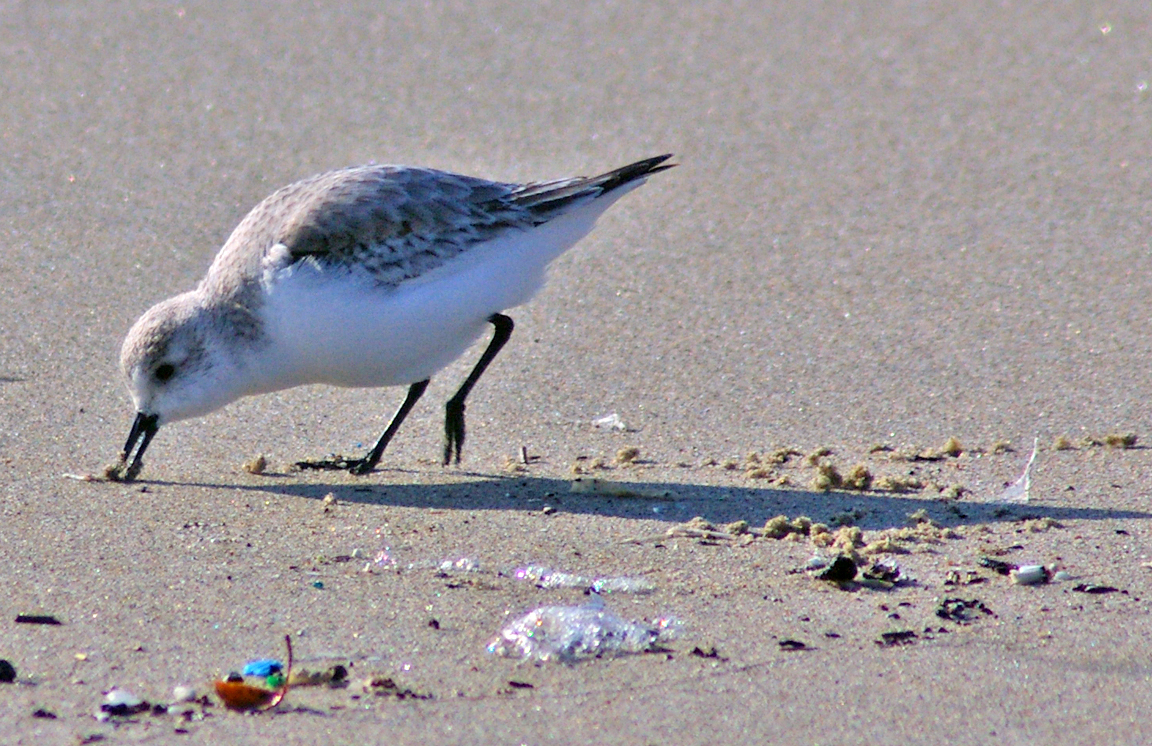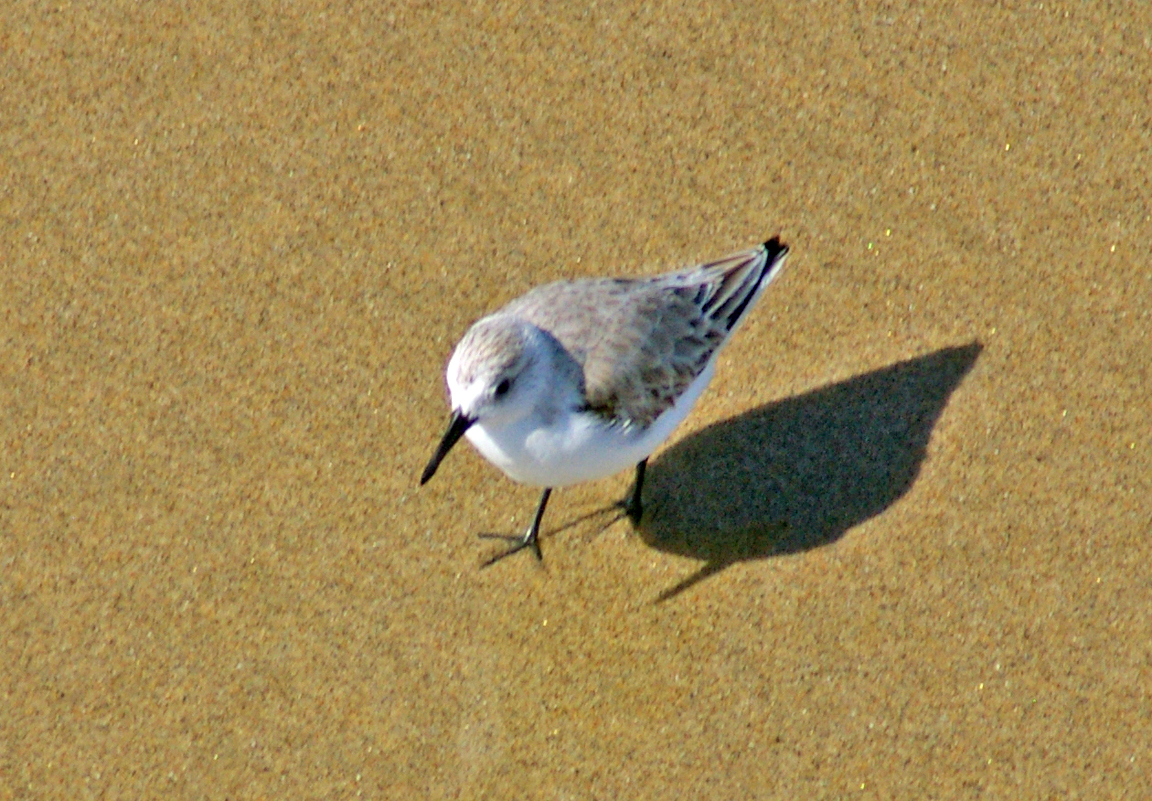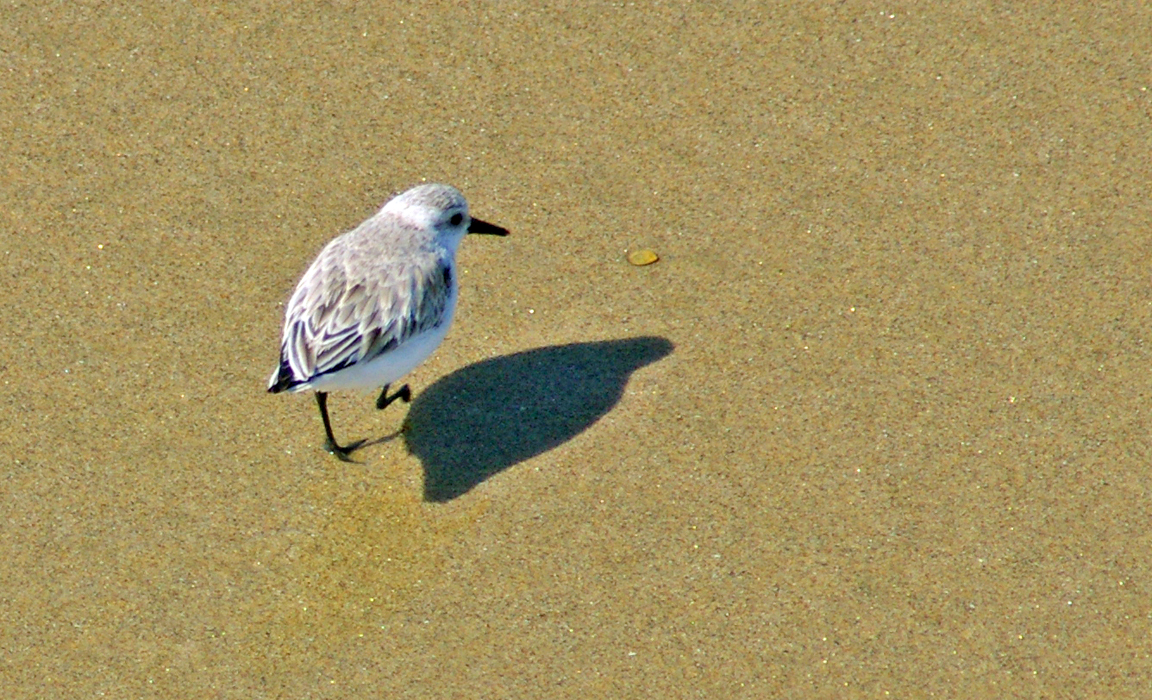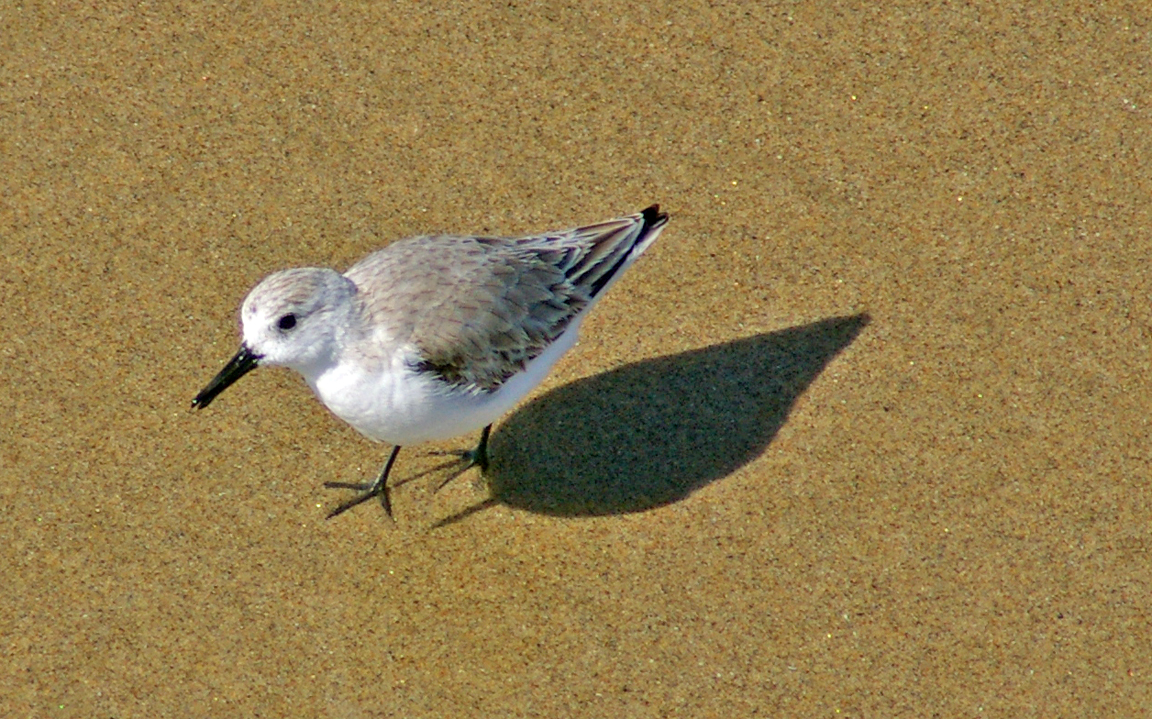|
|
|
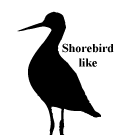 |
Sanderling
|
| Calidris alba | |
The Sanderling is most commonly seen in flocks chasing receding waves on ocean beaches, and running away from them when they return. It breeds in the high Arctic and winters along the Atlantic and Pacific coasts from Canada to Argentina.
Interesting Information
-
The Sanderling is one of the most widespread wintering shorebirds in the world. It is found on nearly all temperate and tropical sandy beaches throughout the world. Among shorebirds, only the Ruddy Turnstone and the Whimbrel rival its worldwide distribution.
-
The mating system of the Sanderling appears to vary among areas, and possibly also among years. It is predominantly monogamous, but occasionally the female lays eggs for several different males in quick succession.
-
It is common for nonbreeding individuals of Arctic-breeding shorebirds to remain on the wintering grounds through the summer. Why make that long trip if you're not going to breed anyway? Many Sanderlings remain in South America without breeding, but only small numbers remain along the North American coasts.
Description
Adult Description
-
Size: 18-20 cm (7-8 in)
-
Wingspan: 35 cm (14 in)
-
Weight: 40-100 g (1.41-3.53 ounces)
-
Small pale sandpiper.
-
Broad white wingstripe bordered in black, visible in flight.
-
Bill black, short, stout, and straight.
-
Legs black.
-
Lacks a hind toe.
Breeding (Alternate) Plumage
Head, breast, and upperparts reddish brown, mottled with dark and light. Belly white.
Nonbreeding (Basic) Plumage
Head and back pale gray. Face white. Underparts clean white. Dark shoulder patch.
Sex Differences
Sexes look similar, with male averaging brighter.
Immature
Juvenile similar to nonbreeding adult, but mottled black and white on back. Usually with buffy patch on sides of breast, streaked with fine black markings.
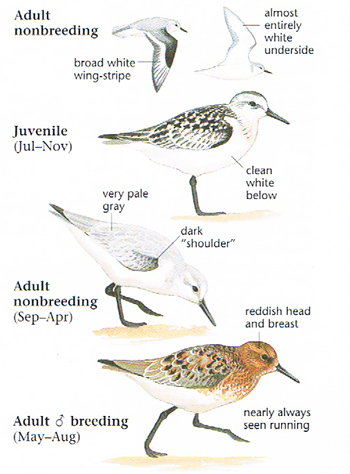
Photo taken from: The Sibley Field Guide by David Allen Sibley
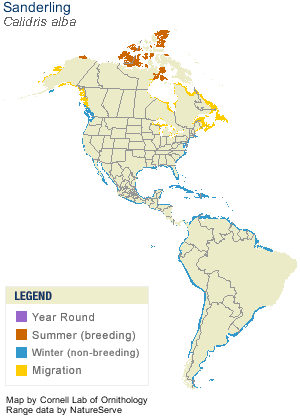
© 2003 Cornell Lab of Ornithology
|
Habitat |
|
|
Behavior |
|
Pecks and probes in sand for food. Runs along tide line. Runs up beach ahead of incoming wave, then turns around and runs after receding wave to pick up stranded invertebrates and probe in wet sand. |
|
Food |
|
Aquatic and terrestrial invertebrates. |
Taxonomy
| Kingdom: | Animalia |
| Phylum: | Chordata |
| Subphylum: | Vertebrata |
| Class: | Aves |
| Order: | Charadriiformes |
| Family: | Scolopacidae |
| Genus: | Calidris |
| Species: | Calidris alba |
Similar Species |
|
|
Bird Sound |
|
Call a soft "wick wick." Twittering in flocks. On breeding grounds male gives frog-like calls in flight. |
|
Eggs look like this |
|
Photo taken from: ARCTOS Collaborative Collection Management Solution |
Videos
Sanderling
Looking for food

